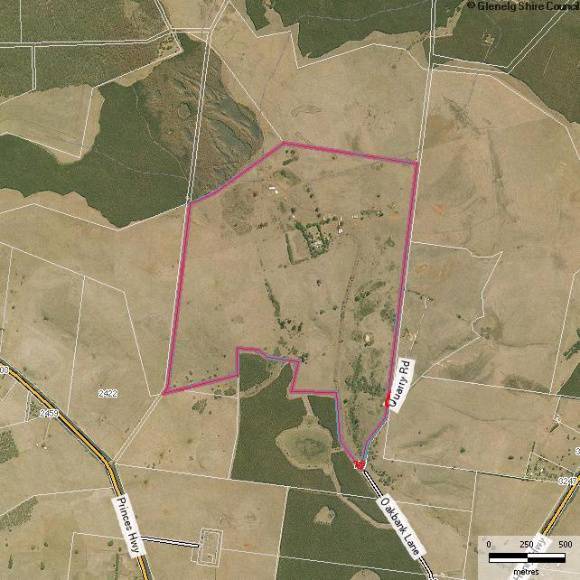| Back to search results » | Back to search page » |
|
OAKBANK HOMESTEAD COMPLEX
Location157 OAKBANK LANE, HEYWOOD, GLENELG SHIRE LevelRecommended for Heritage Overlay |
|
Statement of Significance
What is Significant?
Oakbank Homestead, one of the oldest and most complete homestead complexes in the further Western District, is located 5.5kms due north of Heywood on the southern side of Mount Eckersley. The construction of the old bluestone homestead was commenced in the 1840s by Donald Cameron (1810-1879) Scottish pastoralist, wealthy landowner and early district settler. Two wings, long used as outbuildings and offices, date from this earliest time and demonstrate a vernacular style using local bluestone. Their form and detailing are intriguingly similar to the nearby Native Police Barracks, now ruinous, which date from the same time and the slightly later Customs House at Portland. The next wing, which began the main part of the present homestead, dates from the mid-1850s. It was extended in the 1880s continuing the same conventional plan form but with the richer decoration typical of the time. There is a cast iron verandah around the whole of this section of the homestead. The homestead is set within an extensive mature compartmentalized garden. Beyond the immediate homestead environs, the outbuildings include shearers' quarters, shearing shed, slaughterhouse, butcher's shop, smoke house for bacon and hams, traction engine shed, stables and harness room. There is also a tiny 'Travellers' House,' built to provide shelter for swagmen and to supply food in return for work. The whole homestead complex, including the garden and outbuildings, are said to be substantially intact and in good condition.
How is it Significant?
Oakbank Homestead, Oakbank Lane, Heywood is of historical and architectural significance to the State of Victoria.
Why is it Significant?
Oakbank Homestead, Oakbank Lane, Heywood is of historical significance for its associations with Donald and Eleanor Cameron, important early pastoralists; and with a series of owners culminating in the very long ownership of the Quayle family. It is of architectural significance for its sequence of development in at least four main stages, producing a substantial but conservatively conventional homestead complex.
Group
Farming and Grazing
Category
Homestead Complex




